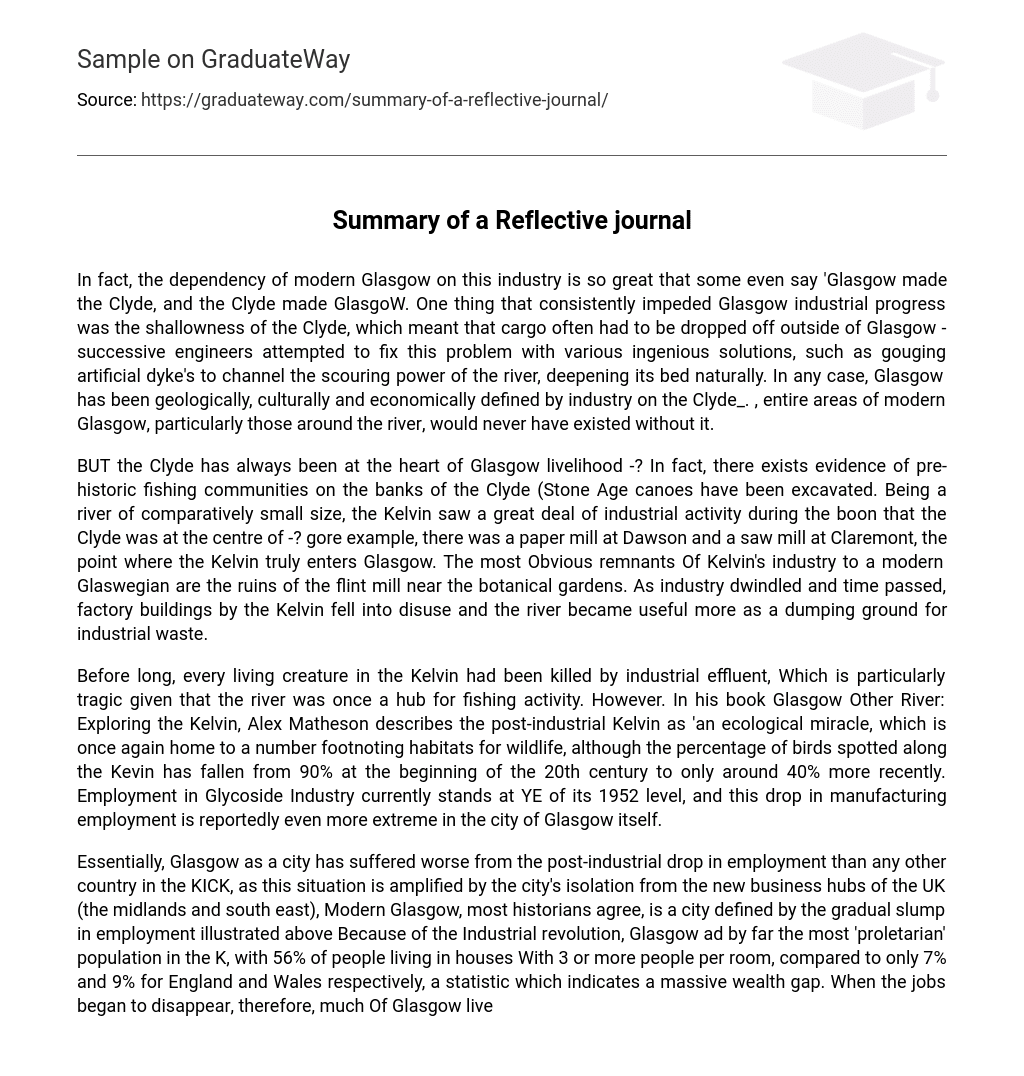In fact, the dependency of modern Glasgow on this industry is so great that some even say ‘Glasgow made the Clyde, and the Clyde made GlasgoW. One thing that consistently impeded Glasgow industrial progress was the shallowness of the Clyde, which meant that cargo often had to be dropped off outside of Glasgow – successive engineers attempted to fix this problem with various ingenious solutions, such as gouging artificial dyke’s to channel the scouring power of the river, deepening its bed naturally. In any case, Glasgow has been geologically, culturally and economically defined by industry on the Clyde_. , entire areas of modern Glasgow, particularly those around the river, would never have existed without it.
BUT the Clyde has always been at the heart of Glasgow livelihood -? In fact, there exists evidence of pre-historic fishing communities on the banks of the Clyde (Stone Age canoes have been excavated. Being a river of comparatively small size, the Kelvin saw a great deal of industrial activity during the boon that the Clyde was at the centre of -? gore example, there was a paper mill at Dawson and a saw mill at Claremont, the point where the Kelvin truly enters Glasgow. The most Obvious remnants Of Kelvin’s industry to a modern Glaswegian are the ruins of the flint mill near the botanical gardens. As industry dwindled and time passed, factory buildings by the Kelvin fell into disuse and the river became useful more as a dumping ground for industrial waste.
Before long, every living creature in the Kelvin had been killed by industrial effluent, Which is particularly tragic given that the river was once a hub for fishing activity. However. In his book Glasgow Other River: Exploring the Kelvin, Alex Matheson describes the post-industrial Kelvin as ‘an ecological miracle, which is once again home to a number footnoting habitats for wildlife, although the percentage of birds spotted along the Kevin has fallen from 90% at the beginning of the 20th century to only around 40% more recently. Employment in Glycoside Industry currently stands at YE of its 1952 level, and this drop in manufacturing employment is reportedly even more extreme in the city of Glasgow itself.
Essentially, Glasgow as a city has suffered worse from the post-industrial drop in employment than any other country in the KICK, as this situation is amplified by the city’s isolation from the new business hubs of the UK (the midlands and south east), Modern Glasgow, most historians agree, is a city defined by the gradual slump in employment illustrated above Because of the Industrial revolution, Glasgow ad by far the most ‘proletarian’ population in the K, with 56% of people living in houses With 3 or more people per room, compared to only 7% and 9% for England and Wales respectively, a statistic which indicates a massive wealth gap. When the jobs began to disappear, therefore, much Of Glasgow lived in abject poverty.





